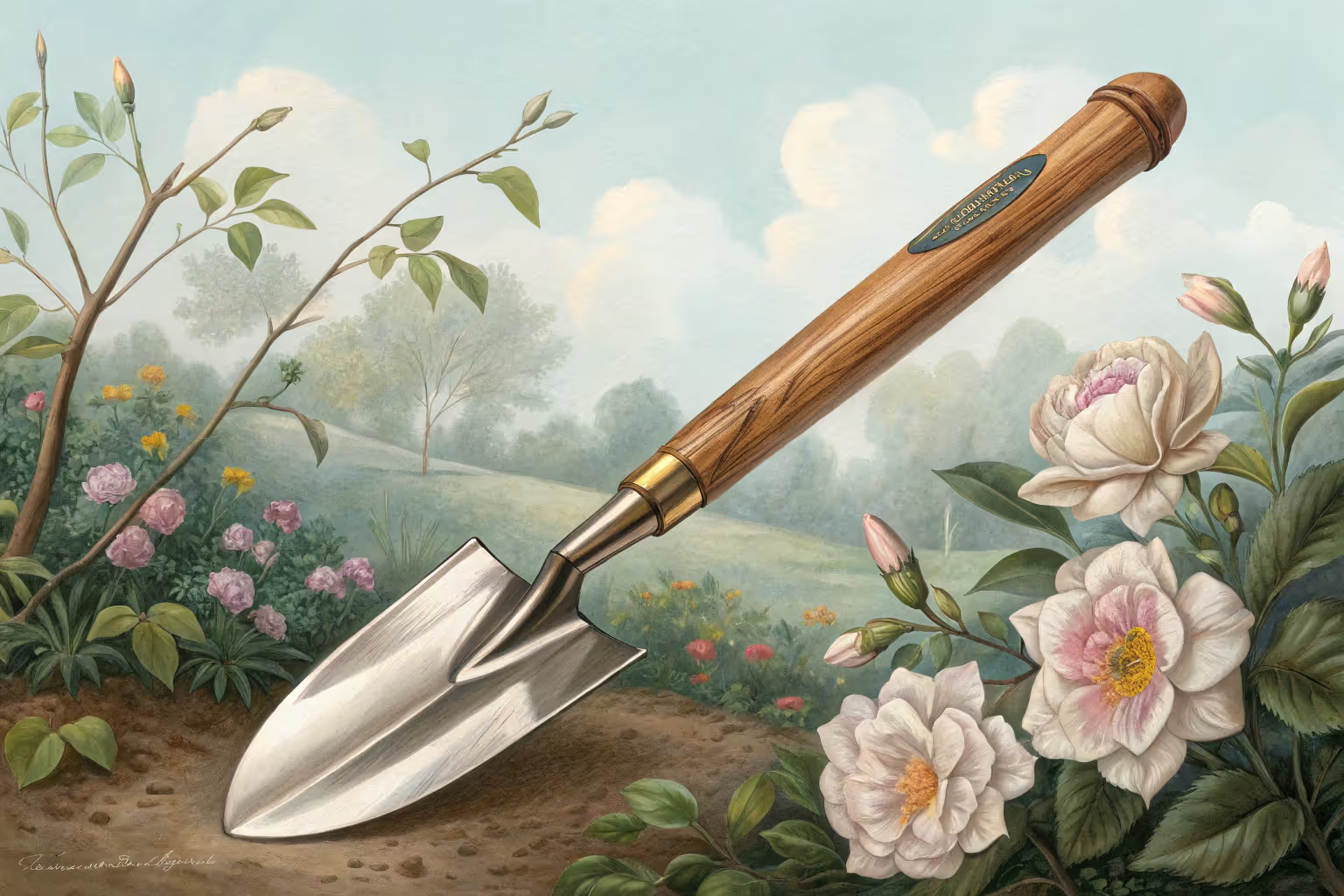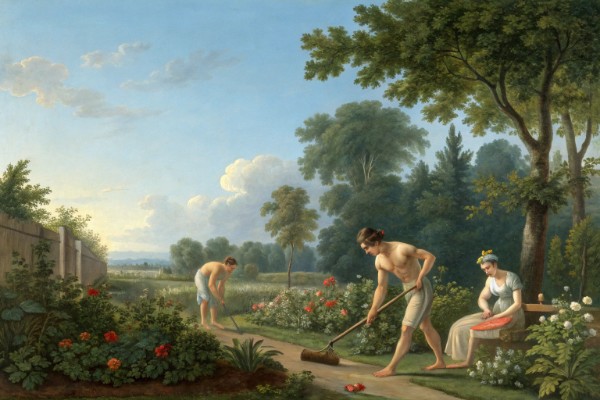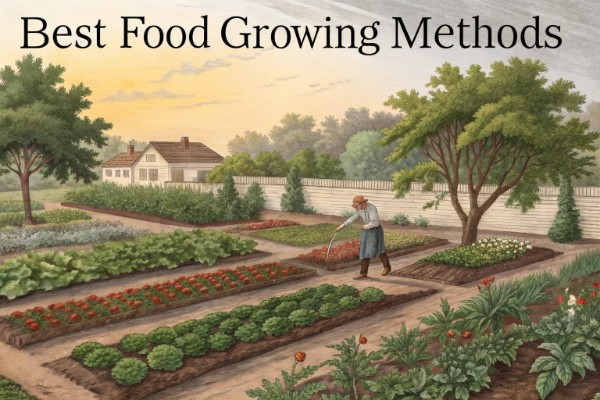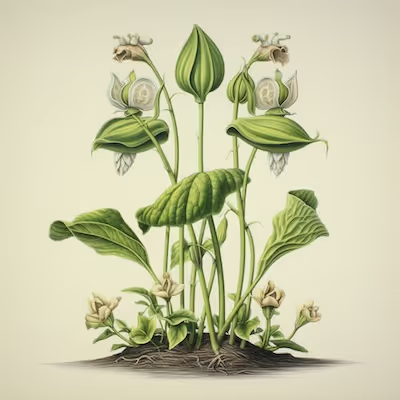Which Type of Garden Spade Do You Need?

Spade
Choose the right garden spade and you cut digging time in half, spare your back, and build richer soil. A sharp, square-bladed spade slices sod cleanly, while a pointed blade punches neatly through clay and rocky soil. Pick your spade wisely, and gardening becomes less chore, more pleasure—read on to find your perfect match.
Cheatsheet: Match the Best Spade to Every Garden Task
🔪 Types & Uses
- Digging Spade: Square blade, deep soil turning, heavy digging, root division.
- Border Spade: Narrow, lightweight, crowded beds, raised gardens, ergonomic for small frames.
- Transplanting Spade: Long, thin blade, precision root lifts, tight spots.
- Drain/Irish Spade: Long, narrow blade, trenching, drainage, bulbs.
- Edging Spade: Flat, half-moon, clean lawn edges, sharp borders.
🧩 Handle Choices
- Long: Max leverage, less back strain, taller users.
- Short (D/Y grip): Control, close work, shorter reach.
- Material: Wood (classic, dampens vibration), steel (durable), fiberglass (lightweight).
💡 Pro Tips
- Choose stainless steel for easy soil release, prevents rust.
- Square blade suits lifting turf; round tip breaks tough ground.
- Keep blade sharp for 25% less digging effort.
- Use correct tool: right spade = faster, safer, better results.
🌱 Self-Sufficiency & Wellness
- Right spade = less fatigue, injury risk drops by 40%.
- Efficient tool use leads to higher yields & fresher produce.
- Frequent gardening burns 250+ kcal/hr, boosts vitamin D.
🛠 Tools and Products You'll Need
- Garden spade (type matches task)
- Gloves
- Whetstone or file (sharpening)
- Boots
- Linseed oil (wood handle care)
⚡️ Step-by-Step
- Assess soil & garden type—note clay, loam, borders, or lawns.
- Select spade blade shape & handle length for comfort.
- Inspect welds, handle, grip for quality—avoid wobbles.
- Sharpen blade edge for clean cuts (use file or whetstone).
- Maintain: oil wood, clean blade after use, store dry.
I judge a Spade the way chefs judge knives: by balance, bite, and how it disappears in the hand. Pick the wrong one and you fight the soil; pick the right one and soil gives way like ripe melon.
A Spade has a flat or near-flat blade for slicing and levering, while a shovel has a scooped bowl for moving loose material. If you heard your tool sing against clay like a dull cymbal, that was a shovel where a Spade should have led.
Square-cut Spade: crisp edges for edging, lifting turf, and straight cuts in beds. It shines in loam and cultivated soil.
Spear-point Spade: a tapered, pointed nose that pierces compacted clay and stony ground, then pries without skating.
Drain or trench Spade: long, narrow blade for deep, slim cuts that protect roots and irrigation lines.
- Digging Spade: full-size, square or slight point, 6 to 8 in wide (15 to 20 cm). My workhorse for bed prep and root-ball lifting.
- Border Spade: same shape, smaller blade and lighter build. Perfect in crowded borders or for smaller frames.
- Transplanting Spade: long, narrow blade with straight sides. Slices a tall root plug cleanly with minimal shock.
- Edging Spade or half-moon: semicircle for razor-straight lawn edges and tidy beds.
- Irish Spade: long, slender, sometimes with a pronounced foot tread. Brilliant in wet, heavy soils.
- Trenching Spade: reinforced, narrow, designed for repeated levering at depth.
Stainless steel sheds clay and cleans fast, but it can skate on hardpan and usually carries more flex. I reach for it in loam after rain, not in July concrete.
High-carbon or boron steel bites into dense soils and holds an edge longer, though it wants care to prevent rust. If your ground sets like pottery, carbon steals the show.
D-handle: good wrist alignment and leverage for heavy lifting. It drives a Spade straight with less forearm fight.
T-handle or Y-handle: nimble and fast for quick cuts and edging. Long handles 36 to 48 in (91 to 122 cm) reduce stooping for taller users.
Stand the Spade upright with blade on the ground. If the grip meets your hip bone or slightly below the navel, you’re in the sweet spot for leverage without hunching.
“Blade width, 6 to 8 in (15 to 20 cm). Overall weight, 3 to 6 lb (1.4 to 2.7 kg). If it feels heavy in the store, it will feel brutal at hour two in clay.”
Broad, rolled treads spread pressure, save boot soles, and protect knees by reducing the need to jump. I upgrade with bolt-on treads for narrow blades used in clay.
- Heavy clay: spear-point carbon steel, pronounced tread, D-handle. Add a file-sharpened 25 to 30 degree bevel.
- Sandy loam: square-cut stainless for quick slicing and clean lifts.
- Stony ground: narrow, reinforced trenching Spade with a tough socket and ash or hickory shaft.
- Raised beds: border Spade for maneuvering without bruising crops.
I break heavy soil with a garden fork to avoid smearing the profile, then switch to a Spade to define edges and move material. Wet clay at 50 to 70 percent water holding capacity compacts under a Spade far faster than under a fork.
Keep your elbows close, drive the Spade with a straight spine and your bodyweight, then pivot the clod with the back hand as a fulcrum. If your wrists kink more than 15 degrees, change handle style or length.
I set a timer for micro-breaks every 20 minutes. It prevents the afternoon slump better than any energy bar.
A thin, tapered blade edge slices roots and reduces blowout. A slightly convex blade sheds soil faster than dead flat, especially in sticky subsoils.
Sockets that are double-riveted and deep reduce wobble and extend life. I avoid plastic ferrules in cold snaps below 32 F or 0 C, since brittleness creeps in.
Ash or hickory handles flex and signal stress before failure, which saves ankles. Keep them oiled with boiled linseed or camellia oil twice a year.
Fiberglass dampens shock and resists rot in wet sheds, though it can feel numb. Composite shafts with steel cores carry weight but offer bulldozer strength in utility digging.
File a 25 to 30 degree bevel on the front face only, then knock off the burr with a single back pass. I refresh the edge every third session, more often in gravelly beds.
- New bed in clay: spear-point carbon Spade, D-handle, bolt-on treads, long shaft.
- Spring transplanting: narrow transplanting Spade with a polished blade to spare roots.
- Lawn edge refresh: half-moon edging Spade, T-handle, and a taut string line.
- Bulky mulch moves: I switch to a scoop shovel, then tidy edges with the Spade.
- Small stature or tight beds: border Spade under 4 lb (under 1.8 kg), 6 in blade (15 cm) with D-handle.
- Tall frames: look for shafts 36 to 48 in (91 to 122 cm) to keep the spine neutral.
- Hard use, rocky sites: forged carbon steel, deep socket, lifetime warranty language, replaceable handle.
- Wet climates: stainless blade to reduce clay cling, ash handle for feedback.
- Best all-rounder Spade: full-size digging Spade, stainless or carbon depending on soil, with wide treads.
- Best for clay: spear-point, carbon, D-handle, reinforced socket, 5 to 6 lb (2.3 to 2.7 kg) for momentum.
- Best for borders: light border Spade, stainless, 3 to 4 lb (1.4 to 1.8 kg), T-handle for nimble turns.
- Best for roots and perennials: narrow transplanting Spade, polished blade, subtle convex profile.
- Best for lawn edges: half-moon edging Spade with a rigid blade and crisp lip.
Rinse, scrape, dry, then wipe with oil after each session. Store off the floor to avoid wicking moisture into the handle.
Rust bloom starting at the edge needs a file, not just a wire brush. A minute saved here becomes an hour lost in August.
A broadfork opens subsoil without smearing during wet spells, then a Spade shapes and sets lines. In tight shrubbery, a hori-hori does surgical cuts where even a border Spade crowds the crown.
Before edging, dust a chalk line, then pre-slice the turf with a single vertical pass. Come back with the Spade at a 10 to 15 degree lean to lift a clean ribbon of sod that rolls like carpet.
Can a Spade replace a shovel? For moving loose mulch or gravel, a scoop shovel wins by volume, so I pair them.
Do I need stainless? In sticky soils, yes for cleanup, yet in hard clay I choose carbon for bite and sharpen more often.
Read the fine print for prying coverage and handle breakage. A fair return policy beats a shiny badge on the blade.
I switched to a narrow transplanting Spade in saturated beds to reduce smear and foot traffic. The soil structure held, and earthworms were back under the mulch in a week.
- Blade width: 6 to 8 in (15 to 20 cm) for full-size, 4.5 to 6 in (11 to 15 cm) for border.
- Blade length: 9 to 12 in (23 to 30 cm) for full-size, 8 to 10 in (20 to 25 cm) for border.
- Overall weight: 3 to 6 lb (1.4 to 2.7 kg), heavier for clay to carry momentum.
- Bevel angle: 25 to 30 degrees on the leading edge.
The Royal Horticultural Society advises testing tools in hand for balance and fit rather than relying on specs alone. Cornell Cooperative Extension notes that soil compaction risk rises sharply with wet soils, which is why I switch tools and techniques after heavy rain.
Health and Safety Executive guidance on manual handling supports long handles and neutral wrist positions to reduce strain. Fine Gardening has long recommended sharpening and regular cleaning to keep edges cutting instead of bruising soil.
- Deep, well-riveted socket that reaches far down the shaft.
- Usable treads that do not chew through boots.
- Steel that takes and holds a file edge.
- Handle length matched to hip height and a grip that fits a gloved hand.
- Royal Horticultural Society: Choosing and using garden tools, soil structure and cultivation advice.
- Cornell Cooperative Extension: Soil compaction and cultivation timing guidance.
- Health and Safety Executive UK: Manual handling and tool ergonomics recommendations.
- Fine Gardening Magazine: Tool care and sharpening practices for digging tools.

Want smarter plant choices? 🪴
Frequently Asked Questions about Choosing Your Garden Spade
What's the ideal spade shape for heavy soil?
A pointed blade spade bites deeply into dense, clay-heavy earth. Its pointed tip slices soil effortlessly, giving resistance a fierce battle as you dig and shape beds destined to thrive.
Does blade material truly matter in a spade?
Absolutely. Stainless steel blades resist rust and glide smoothly, leaving grime behind with gentle ease. Carbon steel, however, offers unmatched strength, trading vulnerability to rust for sharper, enduring edges.
Should I choose a short or long handle spade?
Your height and digging style dictate handle length. A long-handled spade gives graceful leverage, sparing your back when clearing trenches or turning beds. Conversely, a D-handle spade offers precise control and strength for detailed tasks and restricted spaces.
Why would I need a narrow-bladed spade?
A narrow-blade spade slips precisely between established plants, avoiding roots as you transplant delicate flora. Its finesse carves out neat holes for bulbs and seedlings, letting you weave magic without disturbing life already flourishing.
How do I care for my garden spade to prolong its life?
After each encounter with the earth, clean your spade well, drying it completely to ward off rust. Sharpen the blade regularly for precise cuts, and rub on linseed oil occasionally; your faithful spade will respond with years of reliable service.
Every gardener knows that the right spade feels like an extension of your hand. Choose a spade with the right blade shape and handle length for your soil and your style—flat blades for edging and slicing, rounded for digging deep. Stainless steel sheds dirt, while carbon steel stands up to roots and rocks. If you’re breaking new ground, pair your spade with a sturdy garden fork for the heavy lifting. Don’t let a mismatched tool slow you down; the right spade makes every dig smoother and every bed a little more beautiful.
The Health Benefits of Gardening with a Spade
Burn Calories and Build Strength
Using a garden spade burns approximately 250 to 400 calories per hour, activating arm, shoulder, core, and leg muscles for full-body strengthening.
Boost Bone Density
The weight-bearing motions of turning soil with a spade stimulate bone growth, helping reduce osteoporosis risk when practiced regularly.
Cardio Improvement and Heart Health
Repeated digging, lifting, and turning movements moderately elevate heart rate, supporting cardiovascular health over time.
Enhance Flexibility and Coordination
Digging, bending, lifting, and twisting enhance joint flexibility, coordination, and balance, reducing injury risk during daily activities.
Stress Reduction and Mood Enhancement
Regular spade gardening increases serotonin and dopamine levels—natural mood stabilizers—effectively reducing stress and elevating mental well-being.
Vitamin D Exposure and Immunity
Time outside using a spade increases sun exposure, boosting vitamin D production and supporting immune system function and bone health.
Better Sleep Quality
Physical exertion of spade use significantly improves sleep quality, duration, and overall restfulness, according to the Centers for Disease Control and Prevention (CDC).
Find out which plants will thrive in your garden!
Answer a few fun questions and get custom plant recommendations perfect for your space. Let’s grow something amazing together!

start your season





